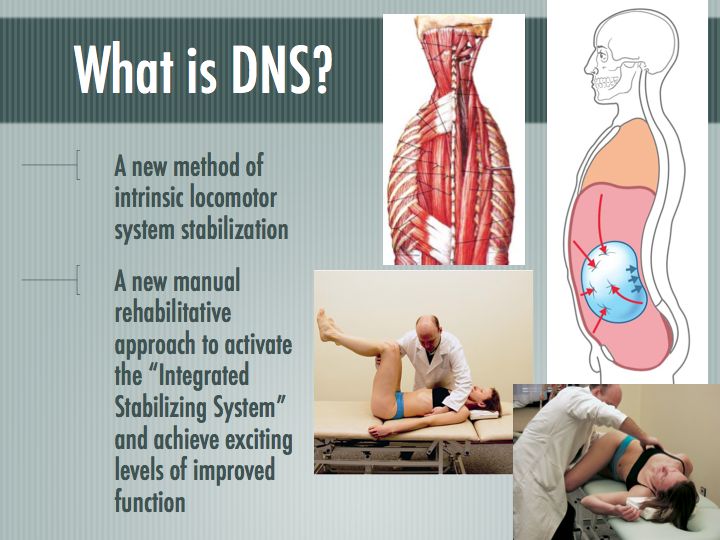One of the most profound way of thinking of functional rehabilitation that I have ever read came from the Prague School of Rehabilitation. It was something that Dr. Liebenson wrote about in his book, “Functional Rehabilitation of the Spine,” it was a chapter on something called dynamic neuromuscular stabilization or DNS. It described a technique that could address postural muscle atypical motor patterns with the use of specific stimulation points with the patient in specific positions. When done correctly it will illicit a correct and expected response in the patient.

Dynamic Neuromuscular Stabilization or (DNS) looks at: breaking down how we developed our movement patterns and then strives to fixing the movement patterns to resolve postural issues in adults.
Upon the patient presenting with… their poor posture. It is not hard to discern that a forward head position or a general rounding of ones shoulders can lead to a constant tightness in the lower neck and upper back regions. This overactivation of the neck extensor and shoulder elevator muscles, will lead to something called upper cross syndrome. This is where we develop weak deep neck flexors and shoulder blade stabilizers, but have the reciprocal muscles of the neck extensor and shoulder elevator muscles chronically overactive and tight.
These advanced motor patterns continue to be used during development, and eventually lead to dysfunction and pain due to overactivity of these dominant muscles (posterior neck muscles). This leads to the necessity to train in a manner that encourages the correct and proper movement. That is where dynamic neuromuscular stabilization comes into play. Dynamic Neuromuscular Stabilization is a way of thinking that can utilize very simple exercises that focus on the correcting postural neck muscles (lengthening them), and strengthening the weak stabilizers of the lower neck and upper back. Specifically the deep neck flexors and shoulder stabilizers.
